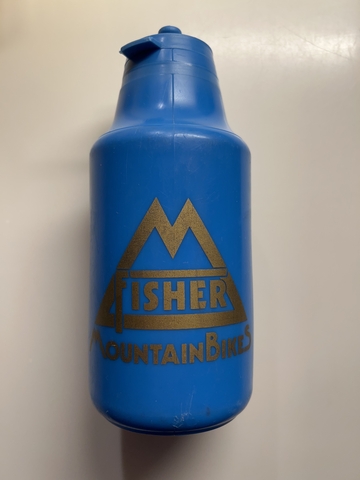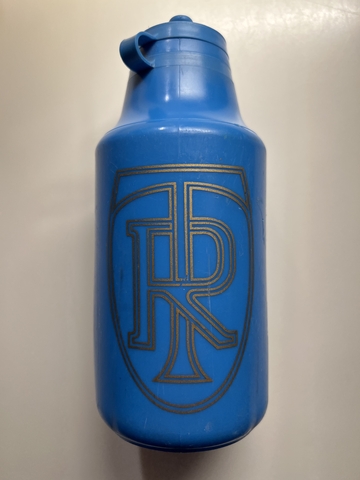Table of Contents
Gary Fisher
Gary Fisher is “one of the inventors of the modern mountain bike” 1), and a founder of “MountainBikes, the first company to specialize in the manufacture of [mt. bikes]” 2). Gary Fisher, Charlie Kelly and Tom Ritchey were perhaps the Beatles of Mountain Bikes 3); ground zero for endless innovation and the crafting of enduring bicycle masterpieces.
Gary Fisher is a polarizing figure in mountain bike history, perhaps due to a larger-than-life personality. His controversial claims to have invented the mountain bike, despite not having his own name appear on any bicycle before 1984 4) , are backed up by his truly foundational roles:
- He rode and helped organize the first Repack races 7)
- He specified and gathered parts, assembled, marketed and sold most of Tom Ritchey's early frames from Kelly & Fisher's MountainBikes company. 10)
Gary Fisher deserves much credit for the existence of mountain bikes, as long we remember all of the others who also created the first bikes as part of the Marin mt. bike revolution, such as Alan Bonds, Joe Breeze, Charlie Kelly and Tom Ritchey - and everyone else honored in the Mountain Bike Hall of Fame.
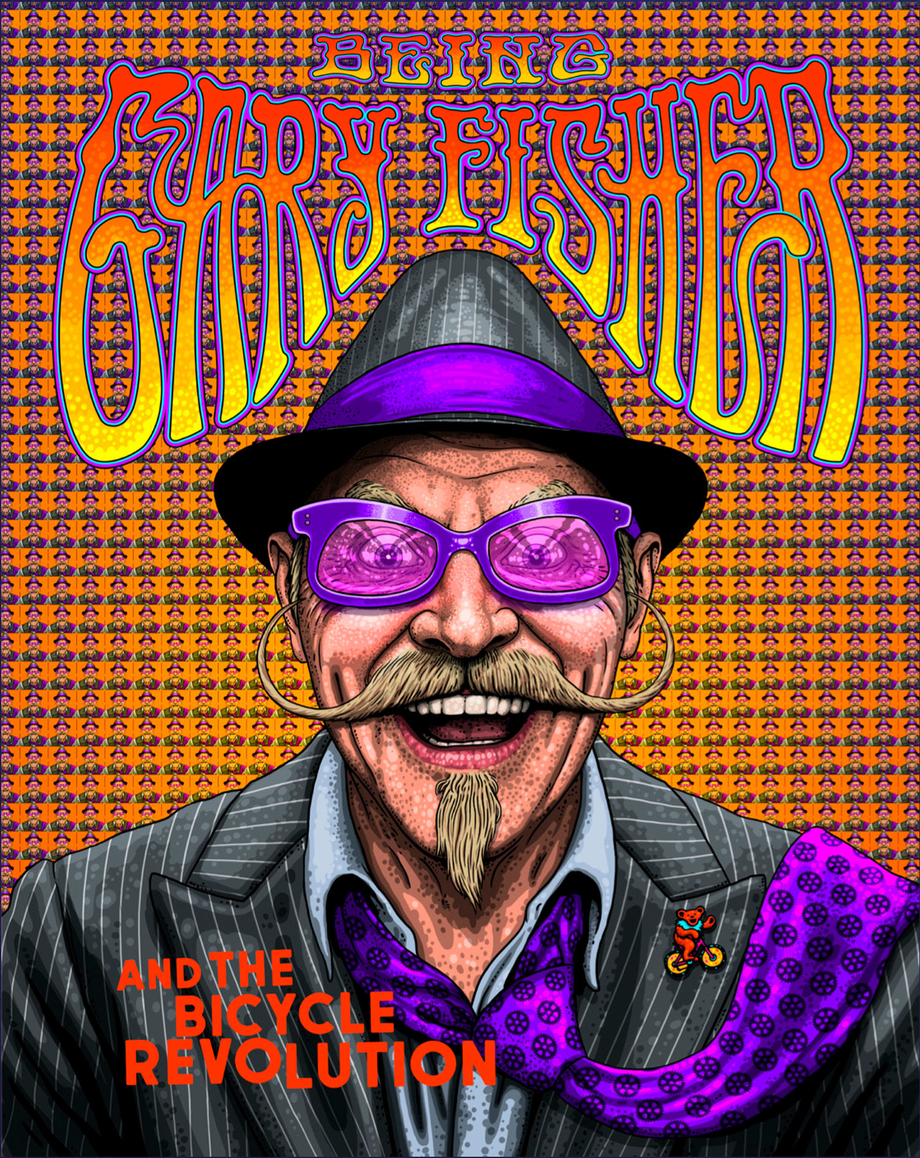
The colorful Gary Fisher
road.cc
1983 Montare
This bicycle is a transitional stage for Gary Fisher, post K&F/Ritchey MountainBikes and pre-Fisher branding. Gary Fisher kept the MountainBikes brand, moved to San Anselmo, and started importing Japanese bikes while also employing local frame builders for higher end custom mt. bikes.
The Montare 11) was sold in 1983 using a head badge of “Montare MountainBikes” with no mention of Gary Fisher. Both Fisher AND Ritchey sold identical Montare models with different stickers. Ritchey Montares were sold only in Canada and were distributed by Rocky Mountain. Both variants sold well and helped to get Fisher's business out of its inherited debt. Ritchey and Fisher maintained some sort of business relationship through 1983 and probably into 1984. This was likely the terms of debt redemption as K&F owed Ritchey for 100's of unpaid frames. See Dissolution.
Fisher Bike would continue to produce the Montare until 2011, which was the last year that a Fisher logo'd bike would be sold by Trek 12). From 2012 until 2017, Trek produced a Gary Fisher signature line, where Gary's smaller signature was applied by the seat tube on to Trek designed bikes.
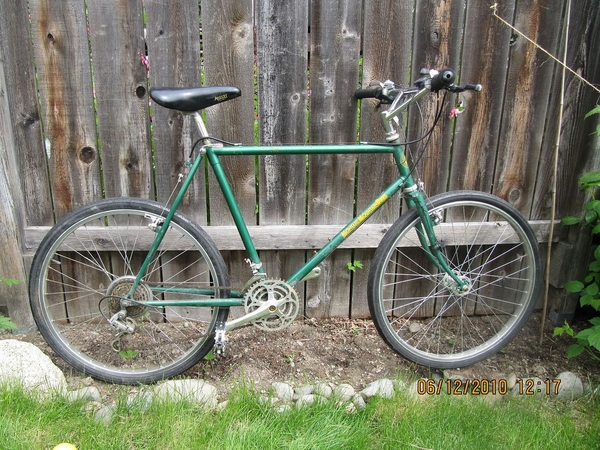
1983 Montare MountainBikes
bikeforums
1984 Mt. Tam
The Fisher MountainBikes logo first appeared in 1984 on the Montare, Mt. Tam and Competition 13). Mt. Tams were fillet brazed by Tom Teesdale. 14)
15)
16)
Fisher naming overlapped with Ritchey as they both continued to use the names: Mt. Tam, Competition, McKinley and Everest. Fisher did this presumably to cash in on Ritchey's good brand quality and to preserve the branding which Fisher spent so much time developing.
The September Fisher 1984 wholesale catalog lists four wholesale prices:
- Montare, $450
- Mt. Tam, $740
- Competition, $1000
- Everest, $1186 17)
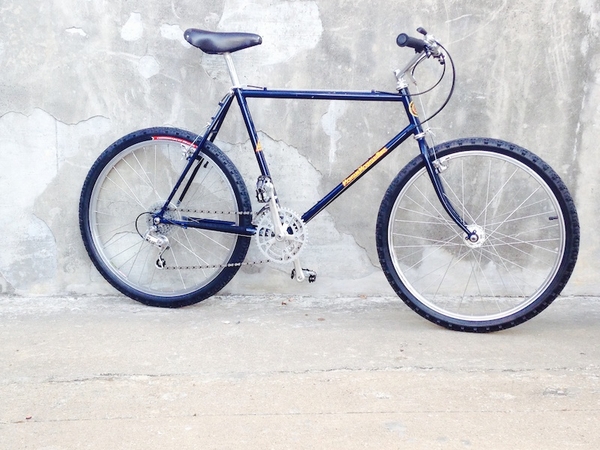
1984 Mt. Tam
pinkbike
1985 Everest
Zebra paint by CycleArt in San Marcos. Fisher bikes quickly set themselves apart from the old Ritchey's, despite Tom Teesdale's best efforts to copy Tom Ritchey's brazing quality, by using cool paint jobs. The frame was fillet brazed by Tom Teesdale 18)
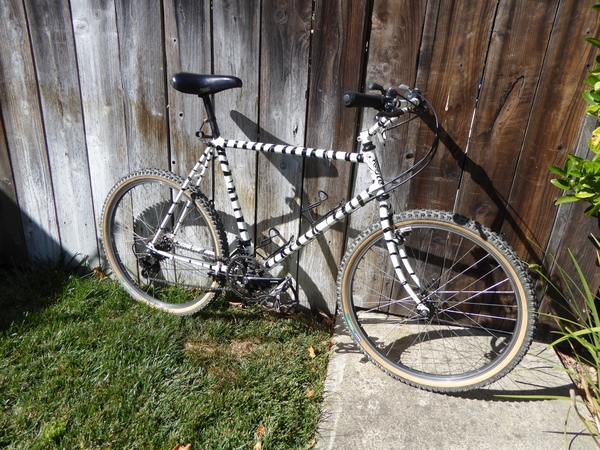
1985 Everest
crankbased
1986 Mt. Tam
Beautiful paint scheme with matching bullmoose bars and seat. Nicely fillet brazed frame. Rare u-brake cover 19). The Mt. Tam name resurrects the old 1983 Ritchey Mount Tam originally sold by Kelly & Fisher.
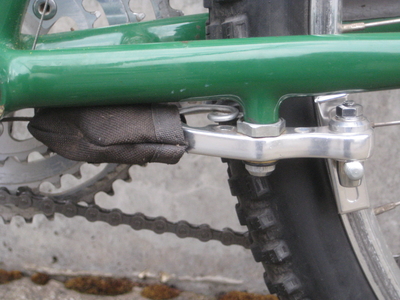
Overland Equipment Rollercam Brake Protector.
classiccyclesus
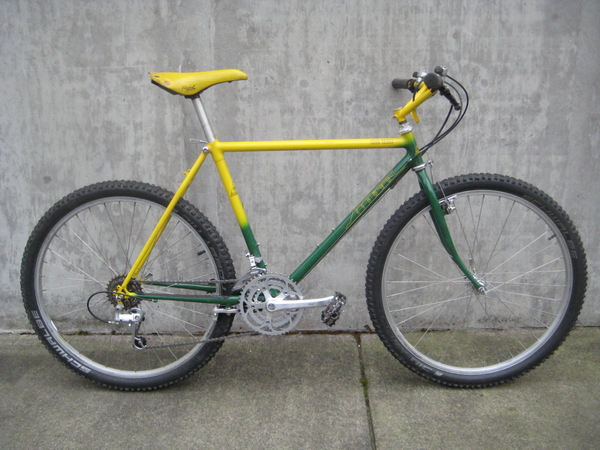
1986 Mt. Tam
classiccyclesus
1987 Montare
Deore XT M730 (1987-88)
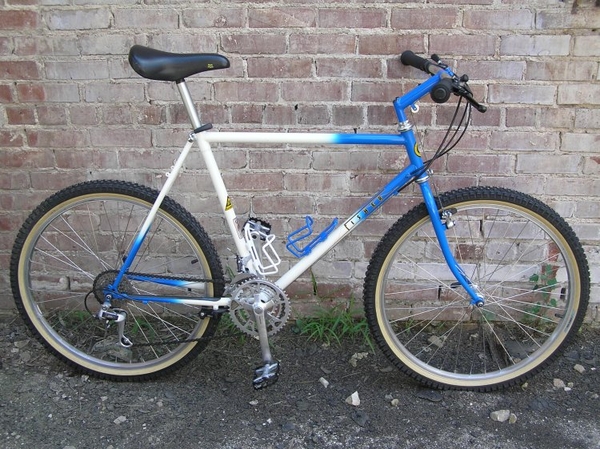
1987 Montare
mombat
1988 Competition
Fillet brazed frame by Tom Teasdale. M730 (1987-88)
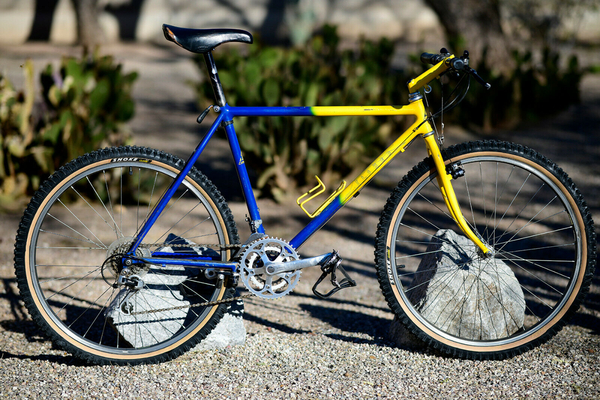
1988 Competition
ebay
1989 CR-7
Shimano XT M732 (1989). Bolted on rear steel triangle onto an aluminum front end.
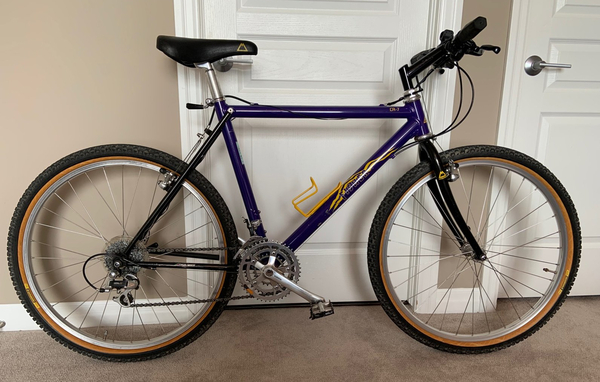
1989 CR-7
gxstore
1990 Supercaliber
Almost all SunTour XC Comp, except for the rear XT derailleur (1989). Perhaps original? The Supercaliber first appeared in the 1990 catalog.
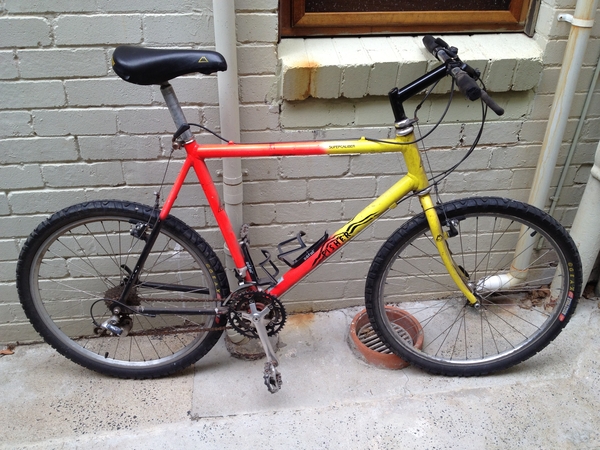
1990 Supercaliber
sydneymountainbikerescue
1991 RS-1
As spec'd it was supposed to have a full Campy Centaur gruppo w/no Shimano. This example is full XT M735 with a Shimano disc front and a Hope rear. Four pivots. Front air-oil damping, elastometer rears. Despite its name, the RS-1 did not use Rockshox RS-1's20) Note the very early use of disc brakes, using Hope disc brakes 21) and their matching hubs.
Mert Lawwill's22) father's personal bike.
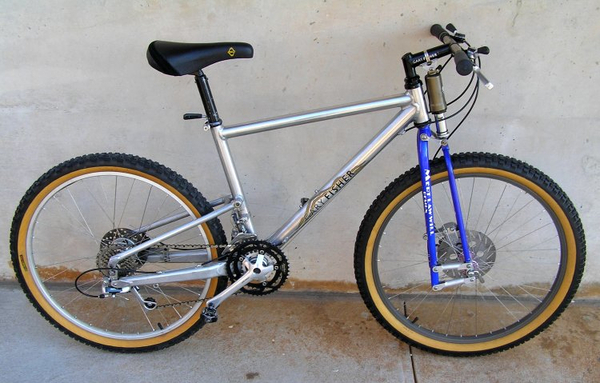
1991 RS-1
mombat
1992 Procaliber
Full XTR.
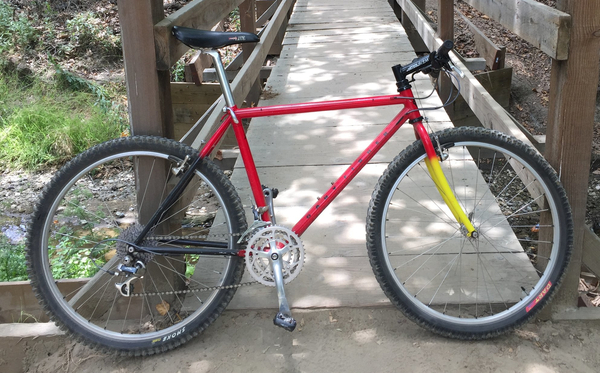
1992 Procaliber
moranosgarage
Brand Murkiness
Kelly, Fisher and Ritchey never clearly distinguished their brands, as their business started without planning and continued with that strategy until they separated. A brand history:
- First MountainBikes mention in media: December 1979, City Sports Magazine
- First MountainBikes ad: February 1980, BMX Plus!
- First K&F MountainBikes ad: March 1983, Fat Tire Flyer, Volume 3, #2.
- First Montare MountainBikes ad: September 1983. mombat. Mentions Rocky Mt being the Canadian distributor.
- First Fisher MountainBikes ad: January 1984, Fat Tire Flyer, Volume 4, #1. 23)
There were never any “Kelly-Fisher” decals. Just the Ritchey name with “MountainBikes” superimposed. The “Kelly Fisher” idea was to move into components and other areas unrelated to the Ritchey frames, but there were other issues that prevented that. Charlie Kelly, posting in mtbr
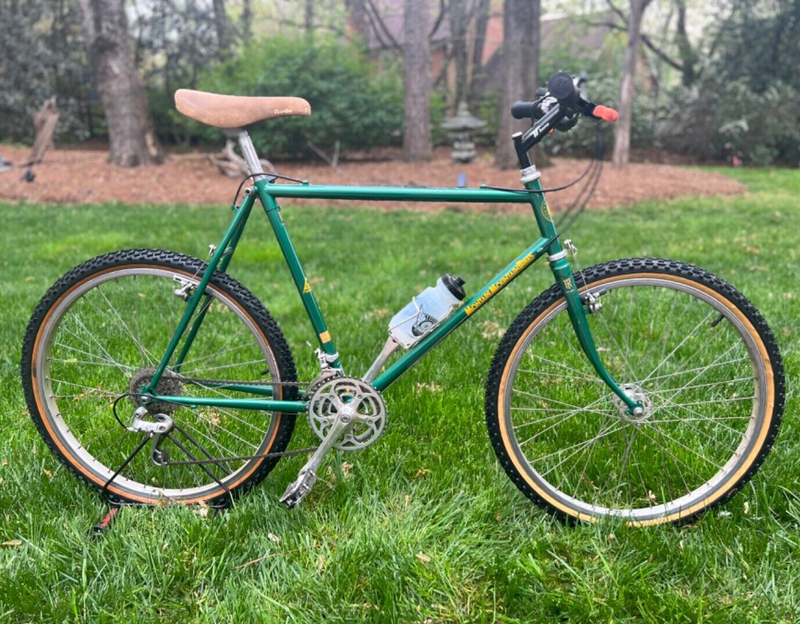
1983/4 Montare with dual Fisher/Ritchey branding.
Most components are consistent with 1983, some have been more recently downgraded. This Montare has a single Fisher MountainBikes decal, with two “designed by Tom Ritchey” stickers on the top tube, plus two of the old TR/MountainBikes stickers on the forks.
ebay
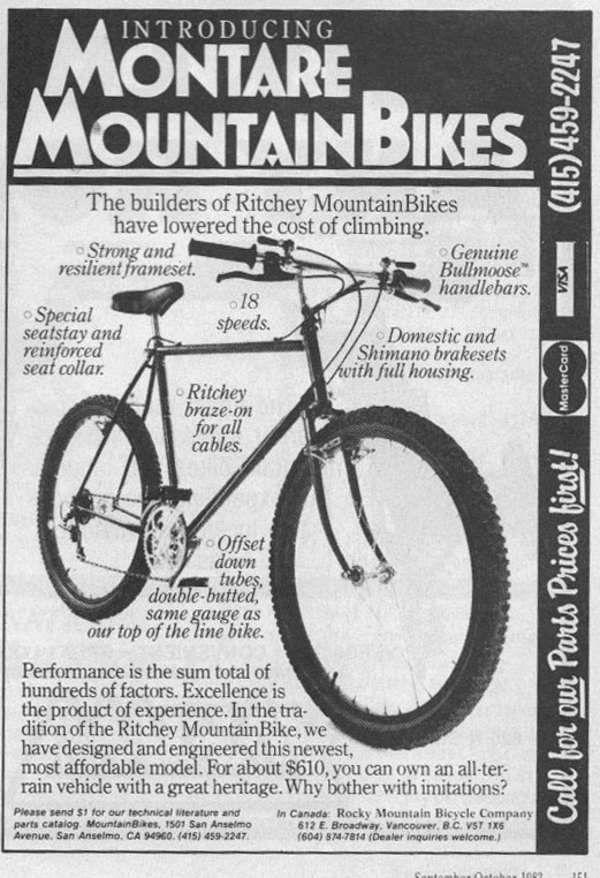
September 1983 Ad for Montare MountainBikes, mentioning Ritchey
mombat
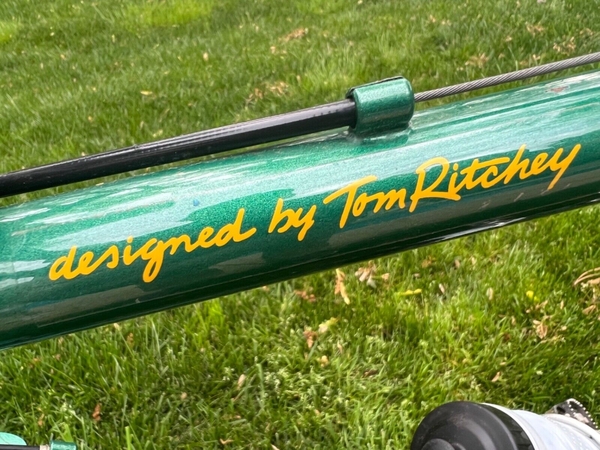
1983/4 Montare signed by Tom
ebay
Dissolution
The breakup of the Kelly-Fisher-Ritchey partnership occurred during the summer of 198324), over cash flow issues and future directions on how to mass produce bikes from Japan. Charlie Kelly's take on how K&F MountainBikes ended:
To say we had a business plan would be an insult to real business plans. Gary and I had no proper lines of authority for making decisions. There was no agreement on how we planned to share profits, if there were any, or what we expected to be paid. By 1983 our debt to Tom [Ritchey] was in the neighborhood of $60,000. Everyone involved started to get nervous. To be sure, [Tom] would have no trouble selling them himself, but if he cut us off he would be out a significant sum. None of us was sleeping well. It stopped being fun because I knew that Gary and I would argue over something. Charlie Kelly, Fat Tire Flyer, chapter 21.
Gary Fisher's recounting of events:
My relationship with Tom Ritchey began to fall apart right from the first trip to Japan 25). During that trip it became very clear that he didn't want the same things I did. I wanted complete bikes. All he wanted was a new set of lugs so we could build cheaper frames. … [aspersions about fraud omitted] … Things went south very quickly after that. Gary Fisher, Being Gary Fisher, page 146
Separately, the Ritchey and Fisher brands took off after this point. Ritchey continues today as an independent bike and component maker. Fisher Bikes was acquired by Anlen of Taiwan in 1991. Fisher comments on his time with Anlen:
I was basically a puppet president. It was nuts. A lot of stuff went on unbeknownst to me. It was totally frustrating watching something we built for all those years just get crushed in a lot of ways.“ Gary Fisher, quoted in: bmxmuseum
18 months later, in 1993, Fisher was rescued by Trek where the brand thrived until 2011, at which point Gary Fisher's name was reduced to a small signature decal on a dwindling number of bikes until 2017.

Gary Fisher signing for Trek spin.ph
Where does this dual-branded water bottle fit into the timeline?
personal mtbtimeline collection
Production Notes
[1]. ?

